Bel-Vick’s Anchor: The Angelus Arcade and The Arcadia Theatre — 1920s
by Paula Bosse
 The 2000 block of Greenville Avenue, 1930… (click for larger image)
The 2000 block of Greenville Avenue, 1930… (click for larger image)
by Paula Bosse
I’ve written about the Arcadia Theatre before (here and here), but until I discovered the above photo from 1930, I’d never really thought about what had been on that site previously (the northwest corner of Greenville Avenue and Sears Street, now the home of a Trader Joe’s). There’s a lot going on in that photo, not the least of which is the fabulous Arcadia “tree” sign/marquee, made of sculpted concrete.
Greenville Avenue in the 1920s had a small business district with buildings clustered between Ross Avenue and Belmont, an area which many now call “Lowest Greenville” (the stretch of Greenville a little farther north which is now generally refered to as “Lower Greenville” was being developed but was not really an area of note yet — and “Upper Greenville” — which I don’t really hear people say anymore — was a rural highway which passed through small communities and was mostly surrounded by a lot of open farmland).
A look at city directories of the early 1920s suggests that business owners were trying to establish “Belmont” as the name of the area between Ross and Belmont, and many used the word in their business name (“The Belmont Pharmacy,” for instance). But things began to change in 1922 as development picked up, and “Belmont” suddenly became “Belmont-Vickery” (in a nod to the Vickery Place neighborhood), and then that very quickly became “Bel-Vick” or “Belvick” (a couple of rebel business owners went with “Belvic” but that didn’t seem to catch on). In the 1927 directory there were eight Belvick businesses, almost all of which were in the 1800 and 1900 blocks of Greenville, the blocks seen in the photo below (you can see the Arcadia “tree” in the distance on the left).
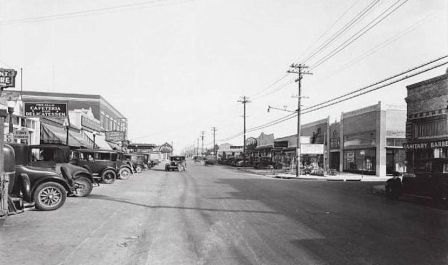
Greenville Avenue, 1930 (Dallas Public Library)
At least one business came up with a cutesy “Belvick” logo:
(One of these businesses, Belvick Electric Co., ended up on Garland Road, owned by the family of “King of the Hill” writer and producer Jim Dauterive, a name which should be familiar to all “King of the Hill” fans; I wrote about that tidbit of hyper-trivia at the end of this post.)
There was even a small theater at 1804½ Greenville Ave. for a year or two, pre-dating the Arcadia by five years. The Belmont Theatre opened in Sept. 1922, but when it changed ownership a few months later it became, you guessed it, the Belvick Theatre. I hope patrons didn’t get too attached, because it was out of business by the time the 1924 directory was published. Here’s what that building looked like in 2012 (sadly, it no longer looks anything like this) — the theater was, I believe, in the right half of the building.
In 1923, a Greenville Avenue developer, Albert J. Klein, built a large building called the Angelus Arcade in the 2000 block of Greenville, at Sears Street. Here are a couple of woefully fuzzy classified ads for the under-construction “Greenville Market Place” and a list of the types of “first-class” businesses wanted to occupy the new arcade (click for larger-but-still-hard-to-read images).
The arcade had several tenants and served as something of a public meeting place for the neighborhood — politicians frequently appeared in front of the large building to give speeches or talk to crowds in impromptu town-hall-like meetings. Like the use of “Belvick,” the name “Angelus” showed up in many of the less-than-imaginitively-named (first-class) businesses:
In 1927 Klein made a deal with the Dean Theatre company to build a new movie theater on the same premises as the Angelus — there would be additions and modifications made to the building, but it would still be home to several other businesses — there’d just be a movie theater inside. It would continue to be an “arcade.” Even though one newspaper article attempted to tie the name “Arcadia” to the new theater’s Italian garden motif which suggested a pastoral harmony with Nature, it seems more likely that people were already calling the building “the arcade,” and “Arcadia” was the next logical step.
The Arcadia Theatre opened on Nov. 4, 1927 with the Mary Astor movie “The Sunset Derby.” A newspaper report noted that “in spite of its remote location” the crowd-size was healthy. Patrons could even pop next door for a chicken dinner if so inclined.
One of the unusual things about the theater was the seating. The backs of the chairs were in a variety of colors (desert sand, cafe au lait, light blue, orchid, green, and “Chinese red”) which were placed in a randomly pattern throughout the auditorium. I think the operators probably thought this design-breakthrough was quirky and cutting edge, but it just looks a little odd. The Dallas Morning News described this feature as being reminiscent of a fun carnival; the Arcadia publicity person wrote that “the effect is as startling as it is pleasing.” …I’ll give you “startling.”
*
Below are a few more images of the Arcadia Theatre through the years.
First, just an odd little postcard from 1934 which found its way into SMU’s archive — a drawing of that cool tree!
 via George W. Cook Collection, DeGolyer Library, SMU
via George W. Cook Collection, DeGolyer Library, SMU
The Deco years, and a painfully pruned tree, in the daytime, and at night:
 1941, via Dallas Historical Society
1941, via Dallas Historical Society
There were a few fires over the years — here’s one from November, 1958.
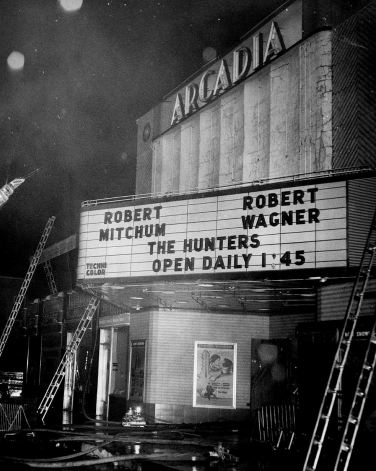 Dallas Firefighters Museum, via the Portal to Texas History
Dallas Firefighters Museum, via the Portal to Texas History
Eventually its days as a second-run suburban theater dwindled, and it became a live-music venue for a while in the 1980s, as seen in this absolutely fabulous photo from 1985 (Joan Jett played the Arcadia on June 13, 1985) taken by Dan Allen, owner of super-cool clothing boutique Assassins.
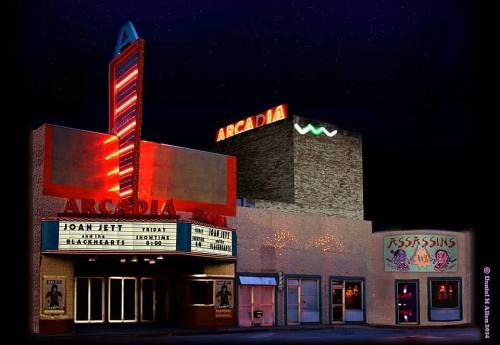 ©Daniel M. Allen 2014, via Facebook
©Daniel M. Allen 2014, via Facebook
It also showed Spanish-language films for a few years.
But, ultimately, a fire ended it all, on June 21, 2006: 120 firefighters responded to a six-alarm blaze caused by a fire that originated in a restaurant — all the businesses in the block were destroyed.
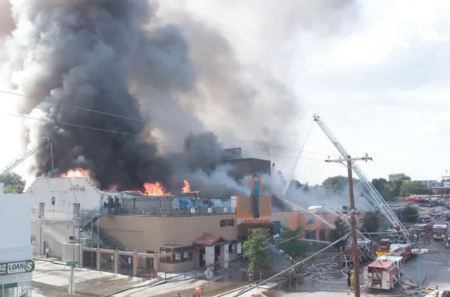 via Cinema Treasures
via Cinema Treasures
Bel-Vick hasn’t been the same since. RIP, Angelus/Arcadia.
***
Sources & Notes
Top photo from Exhibitors Herald World, June 7, 1930.
The 1930 view of Lowest Greenville, looking north from Alta, is from the Frank Rogers Collection, Dallas Public Library; titled “[Lower Greenville Avenue],” the call number is PA84-9/49.
The two photos from 1928 are from Exhibitors Herald World, June 9, 1928. To see the full 4-page article on the still-new Arcadia (with many photos of the interior) as well as a 2-page article from April 12, 1930 about how the Angelus Arcade building had been renovated to accommodate a theater — complete with floor plan — see a PDF here.
More on the Arcadia Theater — including additional photos of the ever-changing facade — can be found in these Flashback Dallas posts:
**
Here are a couple more photos of Greenville looking south from Sears, one from 1927 with buildings I’ve never seen, and one from 1930 with brand new buildings replacing those unfamiliar ones. Here’s the first, from 1927, which shows an unusual building with arches and a church (?!), Riggs Memorial Presbyterian Church, at the northeast corner of Greenville and Oram. (I used to have a little bookstore — Chelsea Books — at 1925 Greenville, in the space occupied by Criswell Furniture in this photo.)

1927, Dallas Public Library, call number PA78-2/1047
And then, just three short years later… bye-bye, weird building and church. The buildings seen in the 1930 photo below are still standing (except for the gas station at the southwest corner at Sears). I love that this street has been immediately recognizable for decades, even though there has been some unfortunate architectural revision going on in ol’ Bel-Vick in recent years.
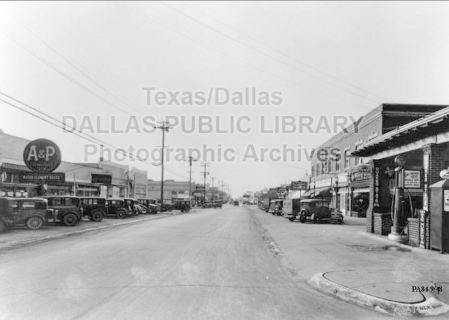
1930, Dallas Public Library, call number PA84-9/48
And here’s a detail from a 1931 Fairchild Aerial photo showing the Angelus/Arcadia at the center left (you can see the tree sign).
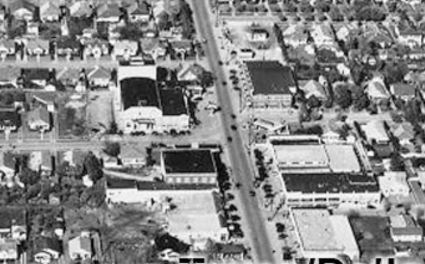
Dallas Public Library, call number PA83-32/16
And, finally, the mural inside Trader Joe’s, located on the spot of Arcadia Theater.
*
![]()
*
Copyright © 2020 Paula Bosse. All Rights Reserved.

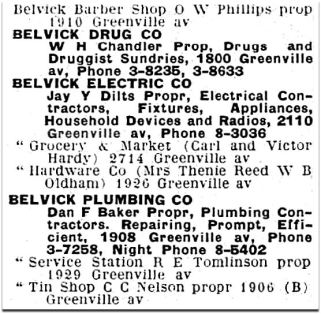
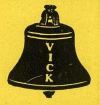
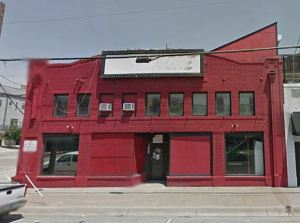
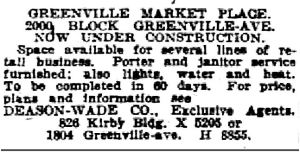
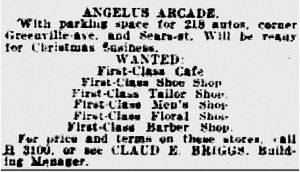
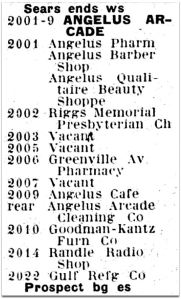
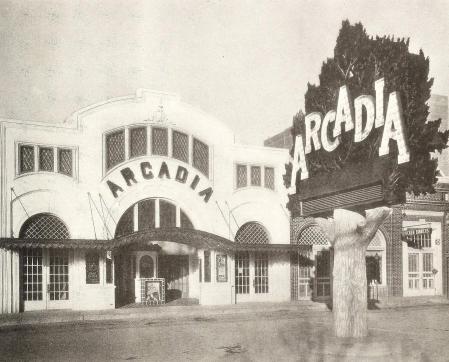
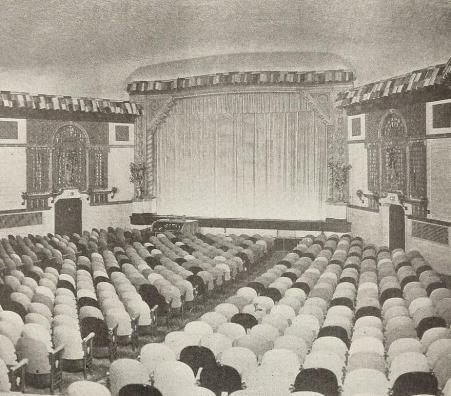

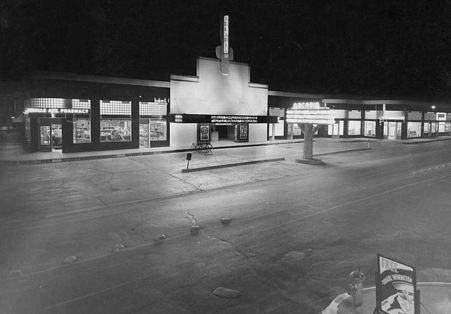


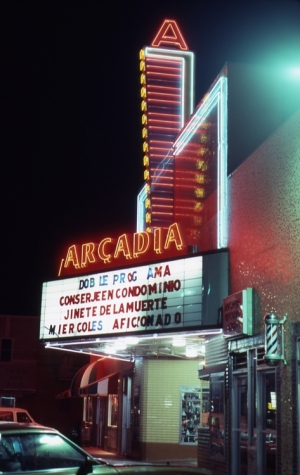
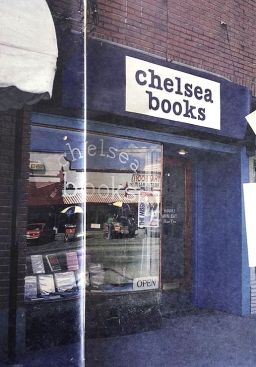

There was a record shop across the street from the theater. In the late fifties, I spent many hours looking in the bins and sampling the music in the listening booth. Still have the 45 rpm cases that were bought at the shop. I seem to recall a five & dime store on the same block, and the shoebox size Greenville Avenue post office.
LikeLiked by 1 person
There was a post office on Greenville? Where was it located?
LikeLike
You can see another record shop on the color image captioned “It also showed Spanish-language films for a few years.” It’s just right of the main entrance
LikeLiked by 1 person
I remember the Record Corner store, and I remember you and you sister, Carol Jo too. I lived next door to Irene.
LikeLike
There was a five and dime on the corner. My friend and I would there sometimes. I can’t recall the name of it.
LikeLike
During the 1950s through the 1980s the great model shop, The Hobby Counter, was near the Arcadia Theatre. the owner, Johnny Clemens, had been a president of the American Modelers Association, and he helped many young folks get started in “stick building”, that is balsa wood and paper or silk covered, flying model airplanes. He was a true expert, and was a friend to everyone who came into the shop. Johnny taught me everything I know about model building. the skills I learned from Johnny Clemens went from model airplane building to architectural models in my later career, working replicas of Renaissance and Baroque stringed musical instruments, and then carried over to the historic leatherwork I do for the Contemporary Longrifle Association. Trips to his shop on Lower Greenville helped mold almost everything I have done for enjoyment. This all started when I was 12, and I’ll be 78 in February. And I don’t plan to stop till they carry me out by the handles!
LikeLiked by 2 people
In 1990, I had the pleasure of seeing Guy Clark, Townes Van Zandt, and Robert Earl Keen in a triple bill at the Arcadia. For those of us who like that kind of thing, it was REALLY the kind of thing we liked.
LikeLiked by 1 person
In the early 1950’s, I had a Dallas Morning News paper route. The wire bundled papers were delivered to the gasoline station across from the Arcadia Theater. My route was Prospect street from Greenville St to Skillman. After opening the bundle with pliers, you would fold the papers and put them in a cloth over the shoulder carry bags. You then would use your bike to spot another bundle further down on the route. Folding the papers was important as it was a mess if you threw the paper and it came undone and scattered pages all over a lawn. You had to stop and take time to retrieve and put it all back together. Throwing papers to the top level of apartments was always tricky. The Arcadia Theater was handy in inclement and freezing windy weather. We would move our bundles across the street under the marque and in the inset of the front of the theater to get out of the weather. It provided a great wind break. Getting there at 4:30 AM was always a challenge during my Jr. High and High School days. It was always so eerily quiet along Greenville during those morning hours. Besides making some spending money, it instilled a work ethic I adhere to today. Great times.
LikeLiked by 1 person
Thanks, Don — I love reading stuff like this!
LikeLike
[…] Perhaps of all the hundreds of historical photos of Dallas I saw in 2020, I think I was most excited to stumble across the one below, which shows a very early photo of Lowest Greenville’s Arcadia Theatre, built in the 1920s. This photo led me to write one of my most research-dense posts of the year. It pays to be someone who loves lingering over obscure film trade publications of yesteryear — otherwise I would never have found this. I can’t fully describe how much I love this photo. Click it. It’s great. Think of it next time you’re in the Trader Joe’s which currently occupies the corner site. From the January post “Bel-Vick’s Anchor: The Angelus Arcade and the Arcadia Theatre — 1920s.” […]
LikeLike
[…] “BEL-VICK’S ANCHOR: THE ANGELUS ARCADE AND THE ARCADIA THEATRE — 1920s“ […]
LikeLike
[…] “BEL-VICK’S ANCHOR: THE ANGELUS ARCADE AND THE ARCADIA THEATRE — 1920s” […]
LikeLike
The Arcadia holds a special place in my heart as it was the first club I went to as a student at TCU around 2004. I remember the radio station KDL always talking about the club “Liquid @ Arcadia”. I didn’t know Arcadia used to be a funky Dallas theatre, but it was pretty cool venue to see DJs in, and I was very sad to hear it burned down!
LikeLiked by 1 person
The Arcadia was my first place of employment, right before it went to Spanish speaking movies. Fond memories.
LikeLike
[…] See more photos of Lowest Greenville from this period in the Flashback Dallas post “Bel-Vick’s Anchor: The Angelus Arcade and The Arcadia Theatre — 1920s.” […]
LikeLike
……. one of my fav places to see movies… i remember that the lounge area (bath rooms) were on a lower area… mens across women’s …… plush setting seating on both sides… the popcorn was the best … fond memories
LikeLiked by 1 person
My grandfather owned a sewing machine shop two doors down and ultimately on the corner. The rear entrance to the shop was in the rear hallway of the Arcadias’ exit. I cannot tell you how many times we snuck into the theater to watch the cartoons before the movie, the usher would the walk us back out before the movie started.. That part of Dallas will remain one of my favorite places. There was a hearing aid store on the other corner and I do remember the Five and Dime nearby. Good times.
LikeLiked by 1 person
Thanks, Robert! I love this!
LikeLike
Great expose and wonderful. My brother, Dan Allen, myself, Julia, McLain, and my husband at that time.m: Jose Cruz were owners of Assassins. I painted the mural on a scaffold late at night. It was an exciting neighborhood, then full of punk rockers,?Goths and heavy metal people. I could go on for ages all the stories that happened at that spot and Angus Wynn who ran the Arcadia theater had amazing bands play there.
LikeLiked by 1 person